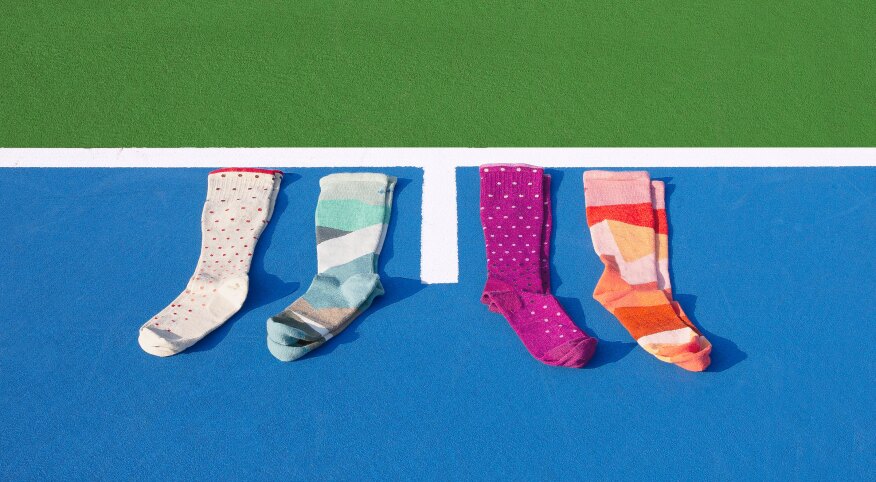If the shoe fits, wear it. And if the funky-looking hosiery helps increase blood circulation, bear it. Knee-high compression socks are designed to prevent and guard against venous disorders such as edema, phlebitis and thrombosis. If you think we’ve reached Nana-ville, think again. Running greats such as Shalene Flanagan and Meb Keflezighi have worn them during the Boston Marathon, while recreational athletes (and mortals) swear by them as well.
What makes compression socks so special?
For starters, they’re super strong, elastic and stretch from your ankle to just below the knee. The socks are tight because they compress veins and arteries on the surface of your leg so that blood is circulated through smaller circulatory channels. In other words, if you can circulate blood faster back to your heart, you can regenerate blood quicker to your legs. A pair costs up to $50 and can be purchased online or at your local drugstore.
Remind me why circulation is important?
Problems with blood flow can lead to uncomfortable aches and pains, not to mention serious diseases such as deep-vein thrombosis (a blood clot that forms in a vein deep in the body, most commonly in the lower leg or thigh.) By providing consistent pressure along with leg movement, the socks encourage blood to flow upward from your ankles and through the deep veins in your legs.
Is that why so many runners wear them?
Yep. When you improve circulation and blood flow, you can remove the lactic acid that builds up in your muscles during high-intensity exercise. In turn, your muscles are fueled with more oxygen so they become less sore during exercise — and while you’re in recovery mode.
So these socks will help improve my performance?
Welllll ... that’s debatable. Steve Magness, author of The Science of Running, recently concluded that there is too much variance to say whether compression socks make any difference in performance during a run. However, post-run, there is some benefit in decreasing muscle fatigue and speeding up recovery.
Do I need them if I’m not athletic?
If you stand or sit for extended periods — or, say, regularly take long-haul flights — you should consider them. Though the simple act of sitting may seem harmless, being in one position for hours can prevent your blood from flowing in all the right directions. Wearing compression socks has been proven to limit the swelling in your legs, which can lead to those vein-based issues. As always, consult with a doctor before trying anything new.
How do I put them on?
This may be the biggest obstacle of all. Because the socks need to be tight to work properly, getting them on your legs can be a challenge. Make sure they’re tighter at the ankle and gradually decrease in compression as they go up the leg. If you’re having trouble, try wearing rubber globes or apply a little cornstarch powder to your legs. Patience helps as well. Once on, the sock should lay smoothly against your skin and feel snug. (And yes, you should wear one on each leg at the same time!)
What else should I know?
Don’t wear compression socks to bed! The pressure applied to your ankle and calf during the night can cut off your circulation. Needless to say, that would definitely sock.
compression socks courtesy Sockwell

Bridget Shevlin









